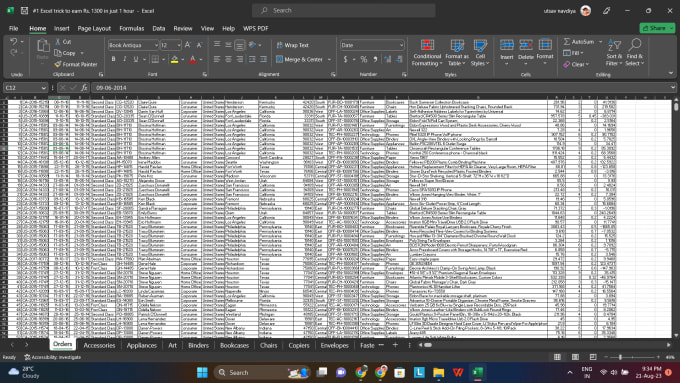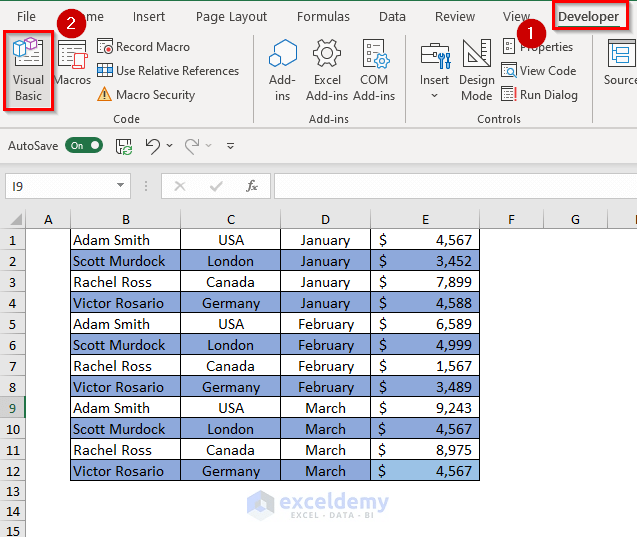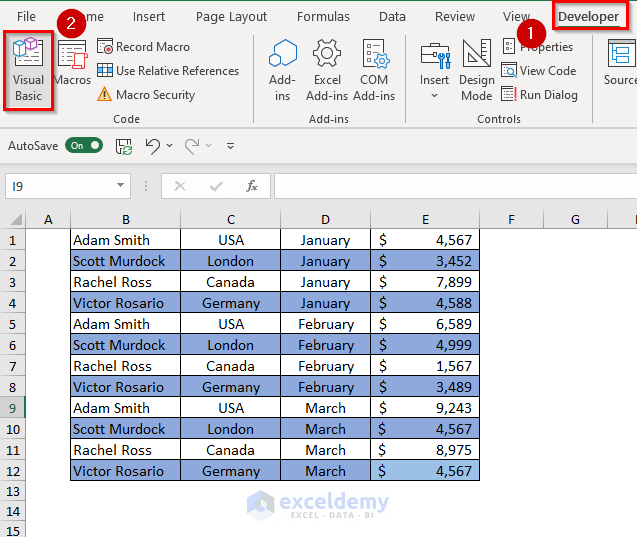Split Your Excel Sheet Easily: Quick Guide

In the realm of data management, Excel spreadsheets serve as the backbone for organizing, analyzing, and presenting data across a myriad of industries. However, as datasets grow, Excel sheets can become unwieldy. Whether you're dealing with financial data, project management, or personal records, the need to split an Excel sheet into smaller, more manageable segments becomes apparent. This guide will delve into why you might want to split your Excel sheet, how to approach this task efficiently, and the benefits of organizing data in this manner.
The Whys and Wherefores of Splitting Your Excel Sheet

Data can quickly become overwhelming in large Excel sheets, leading to issues like:
- Data Clutter: With increased rows and columns, navigating your spreadsheet can become a nightmare.
- Slow Performance: Large datasets can significantly slow down Excel, making simple tasks tedious.
- Collaborative Challenges: Sharing an Excel file for team collaboration can be cumbersome if the data is too vast.
- Enhanced Data Analysis: Segmenting data into related categories allows for more focused and effective analysis.
Identifying When to Split Your Sheet

Recognizing the signs that your Excel workbook needs splitting involves:
- File Size Issues: Excel files exceeding 10MB often indicate a need for data segmentation.
- Performance Lag: Delays in saving or loading can signal an overloaded sheet.
- Too Many Tabs: When your workbook has numerous tabs, it might be time to split.
- Data Overlap: If the same data appears in multiple tabs, consider restructuring.
Manual vs. Automated Methods for Splitting Your Excel Sheet

The approach to splitting your Excel sheet can be either manual or automated:
- Manual Splitting: Good for smaller sheets or when you need precise control over what data goes where.
- Automated Tools: Excel's built-in functions, macros, or third-party software can automate the process for efficiency and accuracy.
Steps to Split Your Excel Sheet Manually

Follow these steps to manually divide your Excel sheet into smaller parts:
- Open your Excel Workbook: Start with the workbook you wish to split.
- Plan your Split: Decide the criteria for splitting, whether by department, date, project, etc.
- Create New Worksheets: For each segment, create a new worksheet within the same workbook or in new ones.
- Select and Copy Data: Highlight the data you want to move. Use 'Ctrl + X' to cut or 'Ctrl + C' to copy, then 'Ctrl + V' to paste into the new sheet.
- Organize: Rename tabs, color-code if helpful, and keep a master sheet listing all the split sheets.
🚀 Note: Ensure you use absolute cell references (like $A$1) when copying formulas or linking data between sheets to prevent formula errors.
Automated Excel Sheet Splitting

For larger datasets or frequent splitting:
- Utilize Excel's Functions: Functions like VLOOKUP, INDEX, MATCH, or even Power Query can help automate data segregation.
- Excel Macros: Write a VBA macro to automate the process based on predefined criteria or actions.
- Third-Party Tools: Explore software like Splitter Pro, Excel Split or Merge, or even Python scripting for complex splitting needs.
💡 Note: When using macros, always ensure your macro security settings allow the execution of your script.
Keeping Your Data Organized Post-Split

After splitting your Excel sheet, consider these strategies:
- Consistent Naming: Use a structured naming convention for clarity.
- Linking Data: Use Excel's linking feature to keep your data synchronized.
- Regular Updates: Schedule time to review and update your split sheets for data integrity.
Segmenting an Excel sheet not only makes your data more manageable but also enables a clearer, more efficient analysis process. Whether you choose manual methods or leverage automation, the goal is to streamline your data management for better performance, accessibility, and collaboration. By adopting these practices, you ensure that your Excel sheets remain user-friendly, enhancing productivity and the overall effectiveness of your data handling.
Why should I split my Excel sheet?

+
Splitting your Excel sheet helps manage large datasets more effectively, reduces file size for better performance, facilitates collaboration, and simplifies data analysis by focusing on specific segments.
Can I automate the process of splitting Excel sheets?

+
Yes, you can use Excel’s VBA (Visual Basic for Applications), Power Query, or even third-party tools to automate the process of splitting sheets based on predefined criteria.
How do I keep my split Excel sheets organized?

+
Maintain organization through consistent naming conventions, linking related data, and scheduling regular updates to ensure data integrity and relevance.
What should I do if I need to combine my split sheets back into one?

+
You can manually copy and paste data, use Excel’s Consolidate feature, or develop VBA scripts to merge sheets based on common identifiers or criteria.
What are the benefits of splitting Excel sheets?

+
Benefits include reduced file size, improved performance, easier data management, enhanced collaboration, and focused analysis on specific datasets.